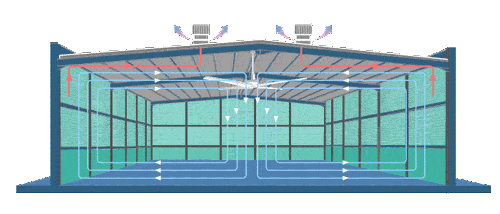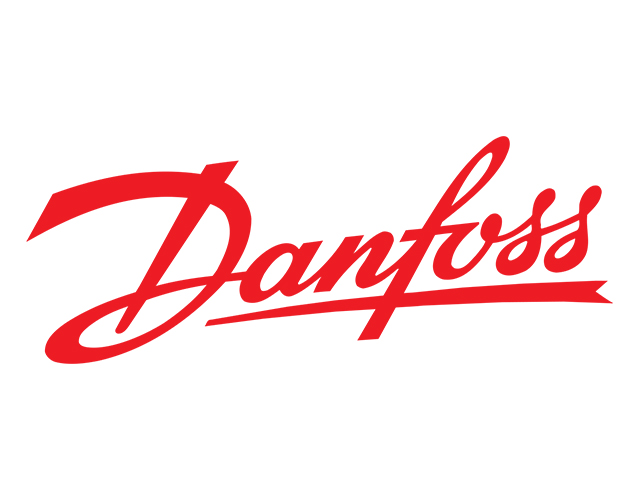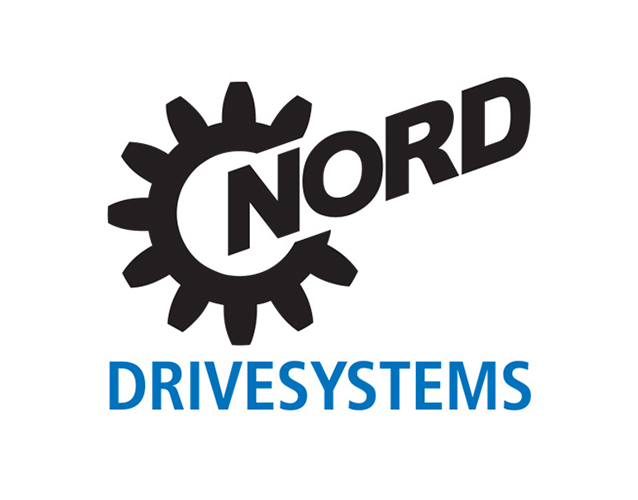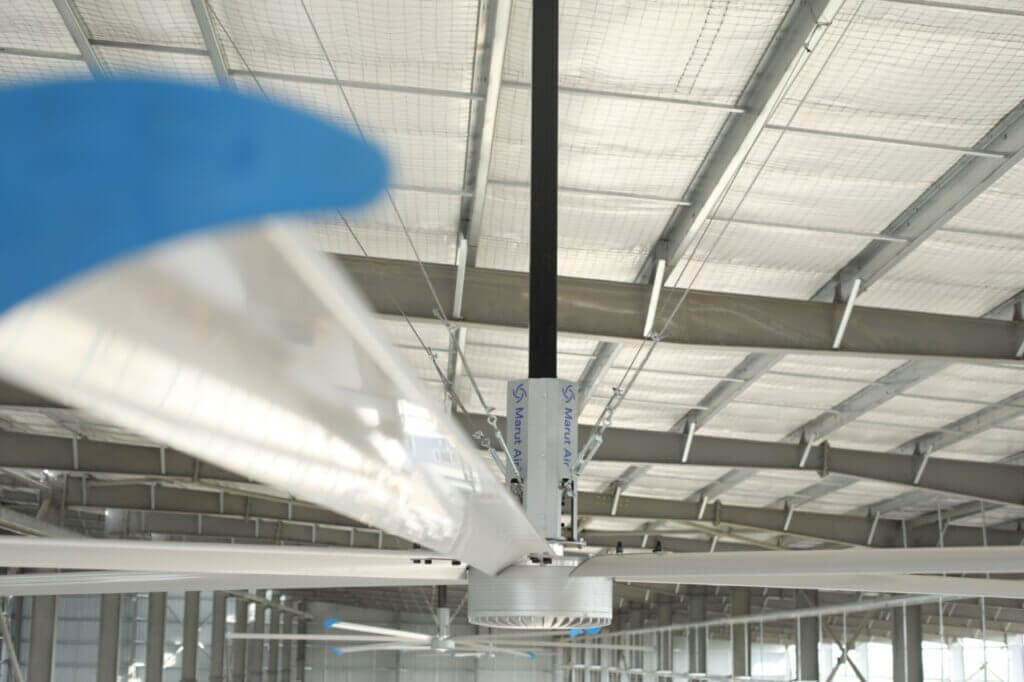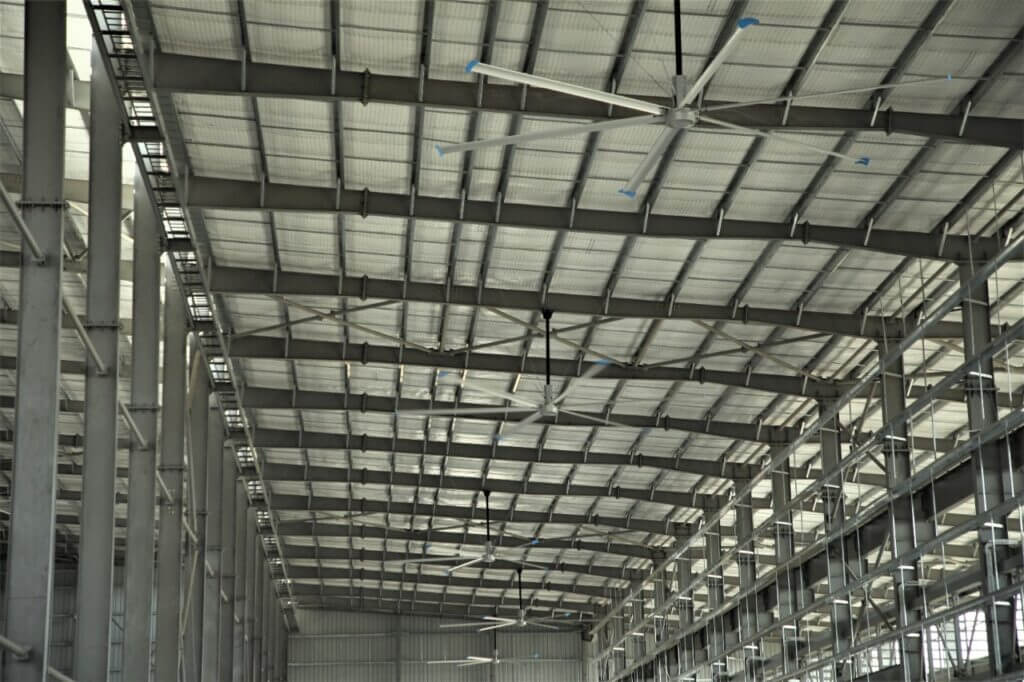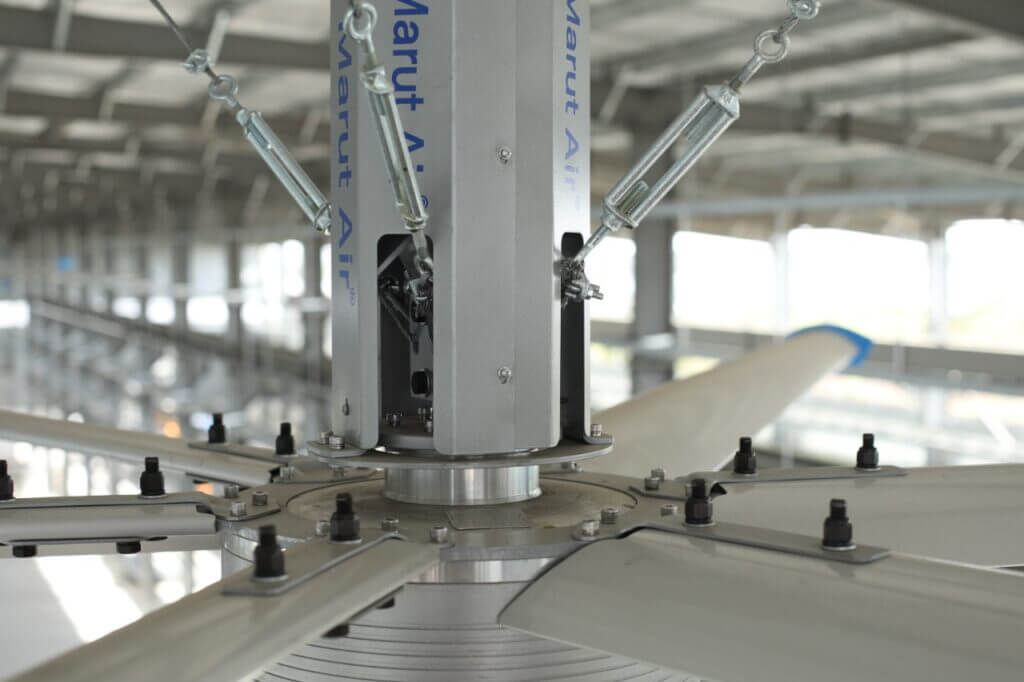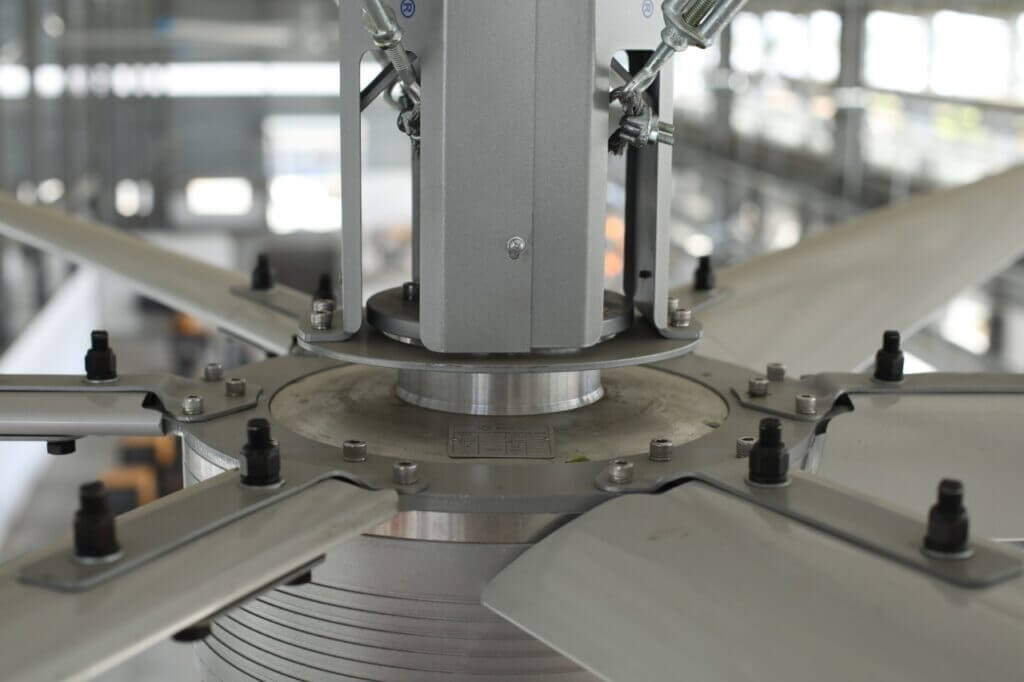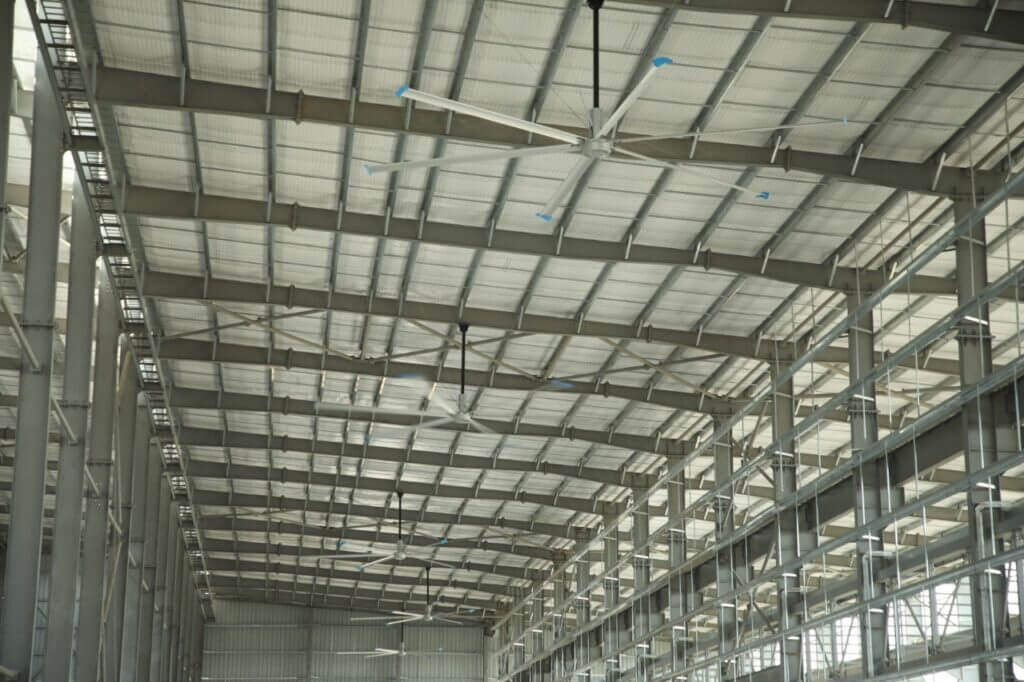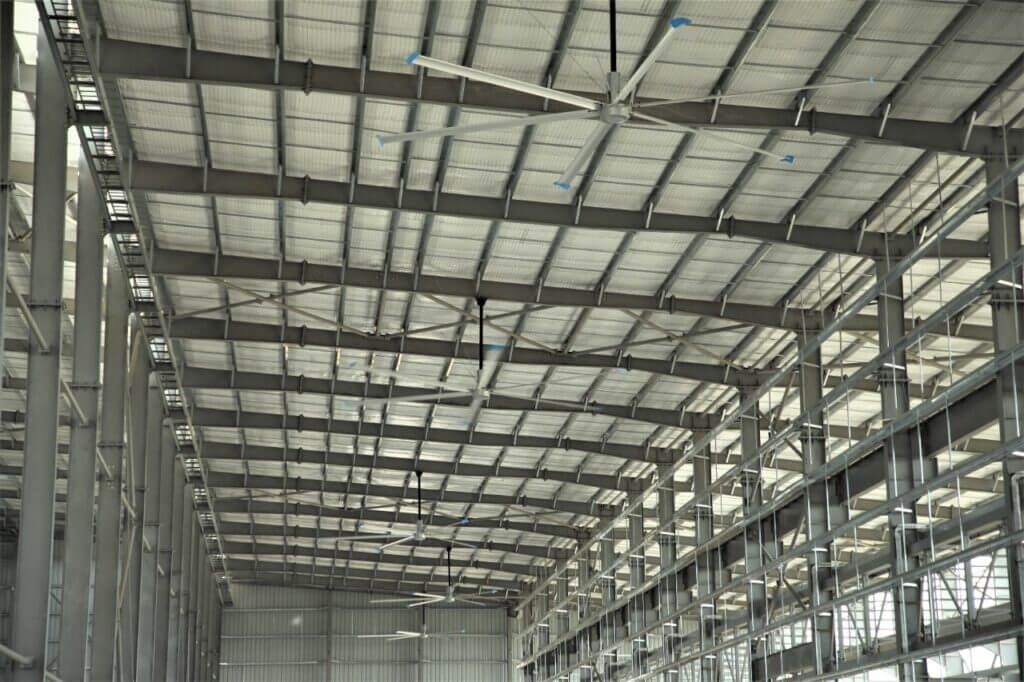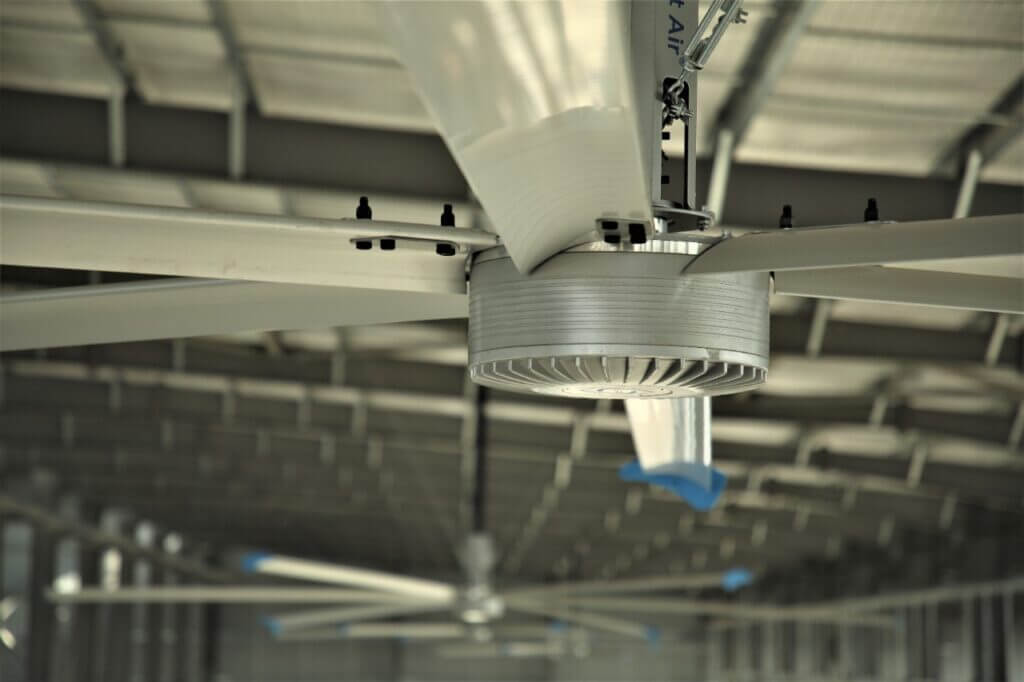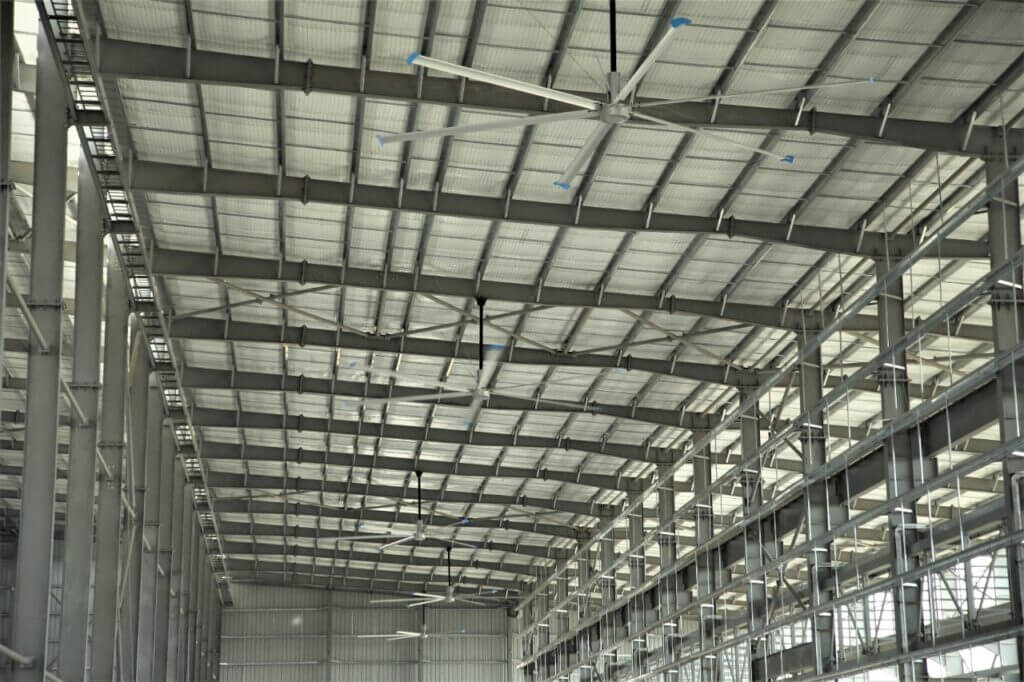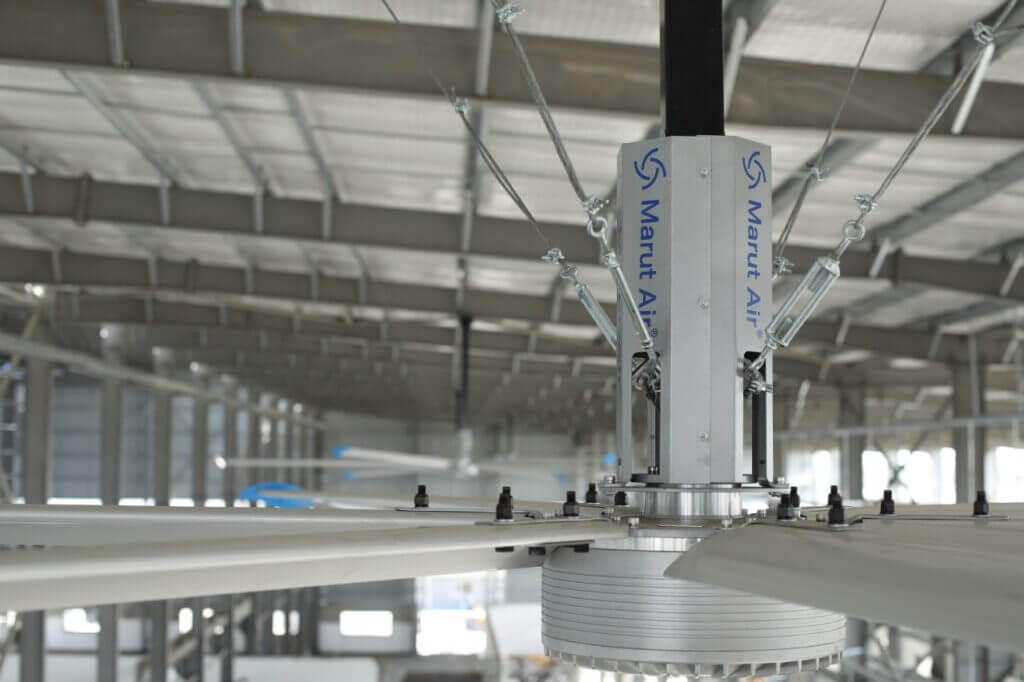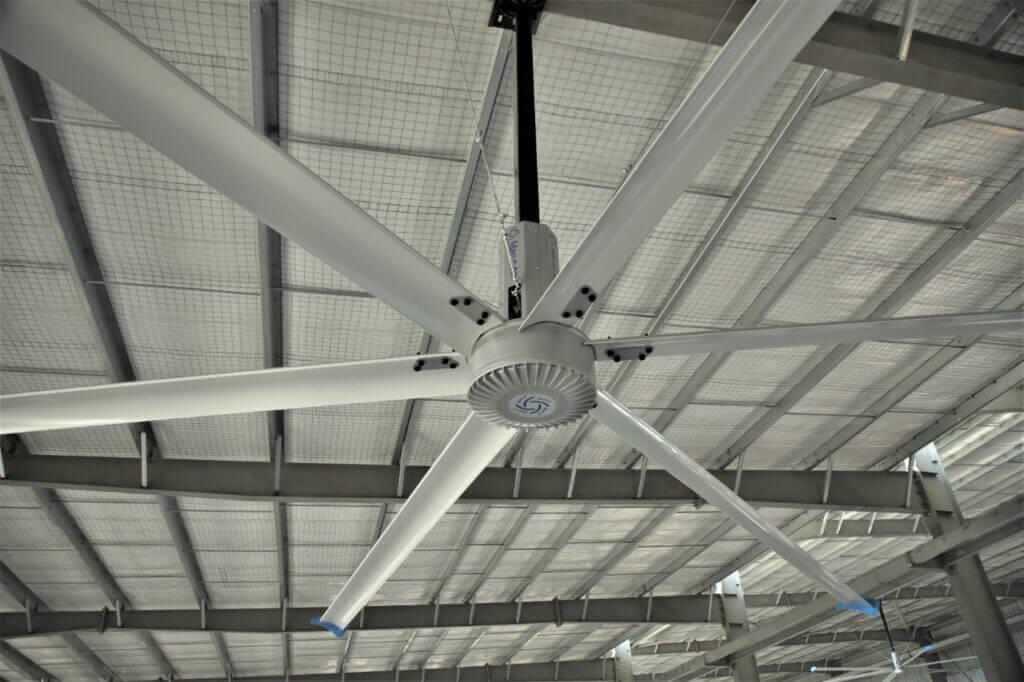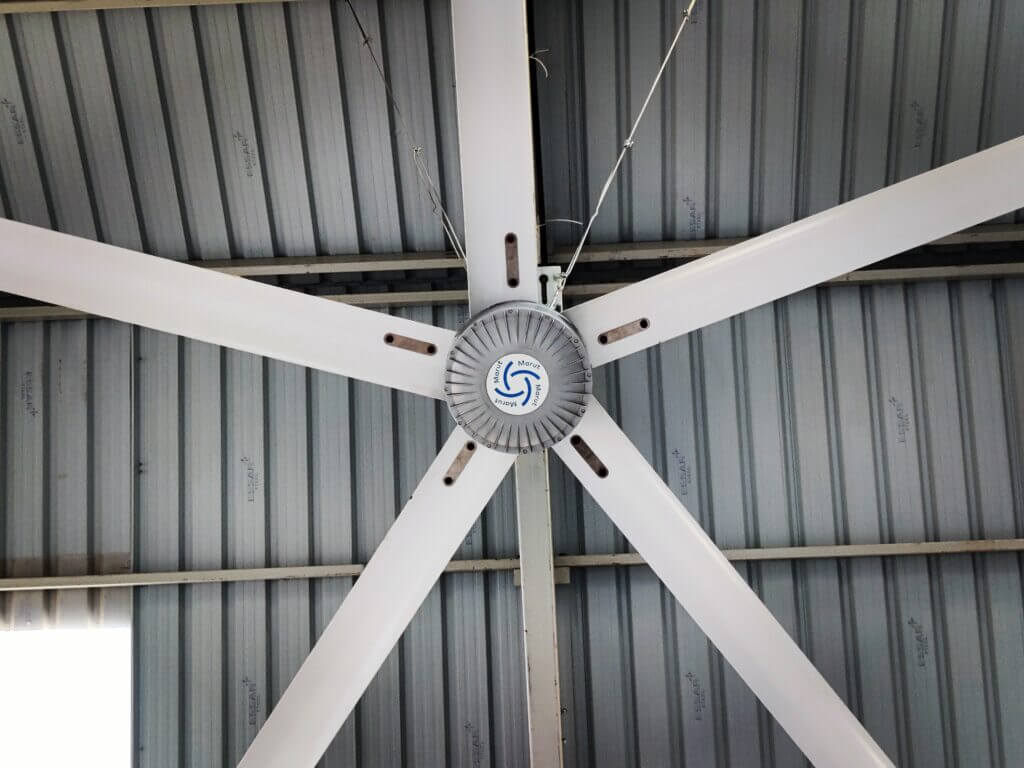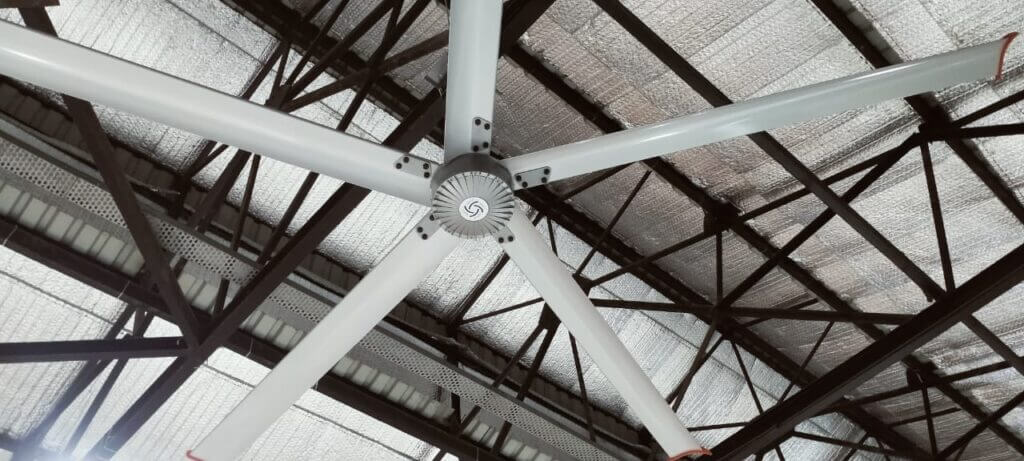Maintaining air quality and energy efficiency is particularly challenging in the congested public spaces of bus and train stations. The High Volume Low Speed (HVLS) fans that have become essential in recent years are now needed in these settings. Let’s look at HVLS fans, their uses, why stations need them, and how Marut Air can assist. HVLS fans describe large-diameter ceiling fans with a diameter of 8 to 24 feet. They rotate slowly and are designed to move large amounts of air.
HVLS fans move slowly but efficiently to move air over large areas instead of spinning quickly and covering a small area. Maintaining a constant, gentle breeze that enhances comfort and air quality is their primary function in crowded areas.
Role of HVLS Fans in Railway & Bus Stations
1. Effectiveness in utilizing energy. Large open areas are generally unsuitable for energy-intensive conventional cooling systems like air conditioners. However, HVLS fans save station operators money by providing effective cooling with a significantly lower electricity consumption.
2. Fair air distribution. Large stations often have hot and cold spots due to their erratic airflow. HVLS fans that disperse air throughout the station uniformly ensure a comfortable atmosphere after they are taken out.
3. Longevity and low upkeep requirements. These fans are long-lasting and require little maintenance even in demanding public environments, thanks to their sturdy motors and high-quality construction made of materials like aeronautical-grade aluminum.
4. When working, keep quiet. Noise can be a significant issue at crowded stations. Due to their quiet nature, HVLS supporters don’t disrupt public announcements or speeches. HVLS fans are versatile enough to be installed in a range of locations within bus and train stations.
Platforms: To keep travelers cool and comfortable while they wait, especially in the summer or during peak hours.
Waiting rooms: To increase airflow in small areas where people gather. Maintaining the comfort of staff and patrons is the aim of keeping ticket counters and lobby areas less cluttered.
Food courts and retail establishments: To prevent heat buildup and maintain cleaner air for patrons and vendors, building comfortable back offices and staff areas for employees.
Furthermore, open spaces like factories, community centers, warehouses, and gyms that require efficient air circulation are commonly equipped with HVLS fans.
About Marut Air: Well-known Manufacturer of HVLS Fans.
A well-known Indian business that focuses on creating and designing HVLS fans is Marut Air. The Marut Airs HVLS fans are renowned for their quality, innovation, and being long-lasting and energy-efficient.
Marut Air’s primary attributes are as follows:
- Variety: Offers a range of HVLS fans in the appropriate models and sizes for several locations, including train and bus stations. Using high-quality materials and state-of-the-art motor technology ensures long-lasting dependability.
- Efficiency in energy use: By moving large volumes of air at slow speeds, Marut Air fans significantly reduce energy consumption compared to conventional cooling systems.
- Customer support includes comprehensive post-purchase guidance, installation guidelines, and maintenance services. Customers can feel secure knowing that Marut Air’s products are quality and safety certified to meet stringent standards. Public transportation companies seeking effective, eco-friendly ventilation solutions can trust Marut Air because of its commitment to sustainability and innovation.
Conclusion:
HVLS fans have revolutionized air management in train and bus stations by providing dependable, reasonably priced, and efficient ventilation. These are crucial for modern public transportation hubs because they can reduce energy consumption, improve comfort, and improve air quality. Companies like Marut Air are spearheading this shift by offering high-end HVLS fans made specifically to fit the needs of these crowded environments. To increase the comfort and effectiveness of your station, the best choice is a reliable manufacturer like Marut Airs HVLS fan.
Frequently Asked Questions on HVLS Fans For Railway and Bus Stations
Question 1. What are HVLS fans, and how do they operate?
Answer: A big ceiling fan called the High Volume Low Speed (HVLS) fan slowly moves a lot of air around, creating a nice breeze and enhancing the air quality in large areas like stations.
Question 2. Why should bus and train stations use HVLS fans?
Answer: HVLS fans are ideal for crowded public spaces because they raise passenger comfort, improve air quality, save energy, and reduce heat. HVLS fans can cover up to 15000 square feet, depending on their size, which is helpful for large platforms and waiting areas. The purpose of HVLS fans is to operate silently so as not to interfere with public announcements or passenger conversations.
Question 3. Why Do Bus and Train Stations Need HVLS Fans?
Answer: Because they improve air quality and comfort. Train and bus stations are frequently hot, stuffy, and dirty due to the high passenger density and poor ventilation. Employee and passenger health is improved by HVLS fans, which continuously move air to reduce the concentration of dangerous particles and pollutants.






